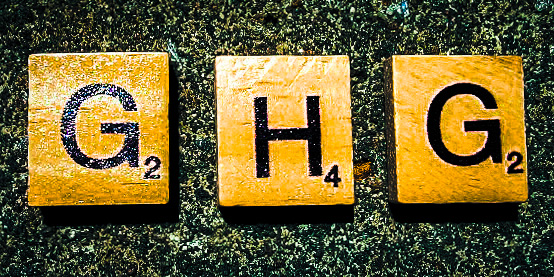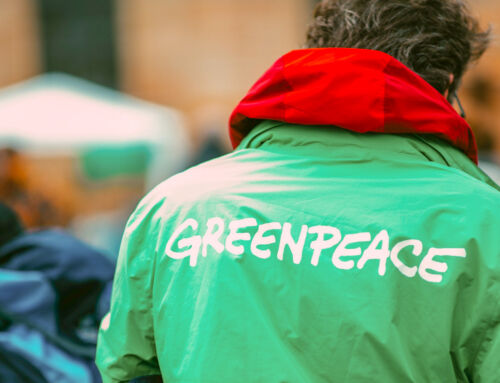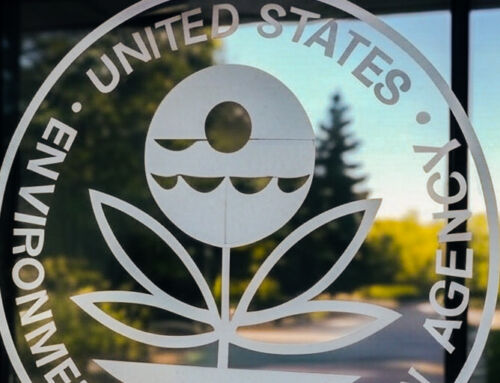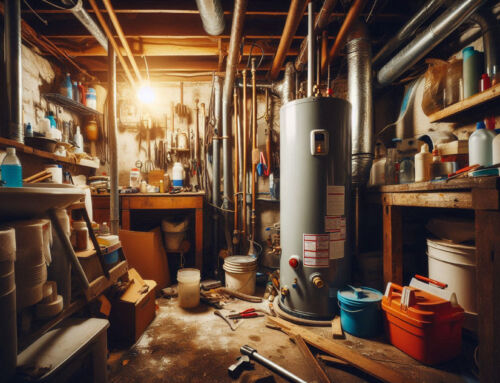View by Topic
Recent Articles
-
NYC Building Electrification Ruling is Interesting But Not a Game ChangerSaturday, March 29th, 2025
-
Greenpeace Ordered to Pay $667M in Blow to ActivismSaturday, March 22nd, 2025
-
The Most Consequential Day of Environmental Deregulation in American HistorySaturday, March 15th, 2025
-
States Challenge Validity of New York’s Climate Change Superfund ActSaturday, March 8th, 2025
-
House Votes to Protect the Hot Water Heater in Your HouseSaturday, March 1st, 2025
View by Month/Year
“Green Building Law Update” Headlines
Recent Articles & News from
Stuart Kaplow’s blog
at GreenBuildingLawUpdate.com
- NYC Building Electrification Ruling is Interesting But Not a Game Changer March 30, 2025
- Greenpeace Ordered to Pay $667M in Legal Blow to Environmental Activism March 23, 2025
- The Most Consequential Day of Environmental Deregulation in American History March 16, 2025
- States Challenge Validity of New York’s Climate Change Superfund Act March 9, 2025
Subscribe to the Green Building Law Update!
Stuart Kaplow brings his expertise and extensive experience to the table with his unique digital publication, "Green Building Law Update". Subscribers receive regular updates to keep them informed about important issues surrounding Environmental Law, Green Building & Real Estate Law, as well as the emerging demand for Environmental Social Governance (ESG).
Get fresh content through the lense of Stuart Kaplow's cutting-edge expertise, innovative commentary and insider perspective. Don't miss another issue! Subscribe below.

Glossary of Greenhouse Gas Terms
With proposed federal regulation of greenhouse gas emissions by the Securities and Exchange Commission requiring GHG disclosure and new state statutes, including a new Maryland law that requires not only disclosure, but also a mandated reduction in GHG emissions, a greater appreciation of the subject of GHG appears in order. This short glossary is an alphabetical list of terms relating to GHG with explanations of each; or if you prefer this is a brief dictionary of specialized terms with their meanings.
Albedo The amount of solar radiation reflected from an object or surface, often expressed as a percentage.
Alternative Energy Energy derived from nontraditional sources (e.g., compressed natural gas, solar, hydroelectric, wind).
Anthropogenic Made by people or resulting from human activities. Usually used in the context of emissions that are produced as a result of human activities.
Atmosphere The gaseous envelope surrounding the Earth. The dry atmosphere consists almost entirely of nitrogen (78.1% volume mixing ratio) and oxygen (20.9% volume mixing ratio), together with a number of trace gases, such as argon (0.93% volume mixing ratio), helium, radiatively active greenhouse gases such as carbon dioxide (0.035% volume mixing ratio), and ozone. In addition, the atmosphere contains water vapor, whose amount is highly variable but typically 1% volume mixing ratio. The atmosphere also contains clouds and aerosols.
Biofuels Gas or liquid fuel made from plant material. Includes wood, wood waste, wood liquors, peat, railroad ties, wood sludge, spent sulfite liquors, agricultural waste, straw, tires, fish oils, tall oil, sludge waste, waste alcohol, municipal solid waste, landfill gases, other waste, and ethanol blended into motor gasoline.
Biomass Materials that are biological in origin, including organic material (both living and dead) from above and below ground, for example, trees, crops, grasses, tree litter, roots, and animals and animal waste.
Carbon Dioxide A naturally occurring gas, and also a byproduct of burning fossil fuels and biomass, as well as land-use changes and other industrial processes. It is the principal human caused greenhouse gas that affects the Earth’s radiative balance. It is the reference gas against which other greenhouse gases are measured and as such has a Global Warming Potential of 1.
Carbon Footprint The total amount of greenhouse gases that are emitted into the atmosphere each year by a person, family, building, organization, or company. A person’s carbon footprint includes greenhouse gas emissions from fuel that an individual burns directly, such as by heating a home or riding in a car. It also includes greenhouse gases that come from producing the goods or services that the individual uses, including emissions from power plants that make electricity, factories that make products, and landfills where trash gets sent.
Carbon Capture and Sequestration Carbon capture and sequestration is a set of technologies that can greatly reduce carbon dioxide emissions from new and existing coal- and gas-fired power plants, industrial processes, and other stationary sources of carbon dioxide. It is a three-step process that includes capture of carbon dioxide from power plants or industrial sources; transport of the captured and compressed carbon dioxide (usually in pipelines); and underground injection and geologic sequestration, or permanent storage, of that carbon dioxide in rock formations that contain tiny openings or pores that trap and hold the carbon dioxide.
Climate Climate in a narrow sense is usually defined as the “average weather,” or more rigorously, as the statistical description in terms of the mean and variability of relevant quantities over a period of time ranging from months to thousands of years. The classical period is 3 decades, as defined by the World Meteorological Organization. These quantities are most often surface variables such as temperature, precipitation, and wind. Climate in a wider sense is the state, including a statistical description, of the climate system. See, Weather.
Climate Change Climate change refers to any significant change in the measures of climate lasting for an extended period of time. In other words, climate change includes major changes in temperature, precipitation, or wind patterns, among others, that occur over several decades or longer.
Fluorinated Gases Powerful synthetic greenhouse gases such as hydrofluorocarbons, perfluorocarbons, and sulfur hexafluoride that are emitted from a variety of industrial processes. Fluorinated gases are sometimes used as substitutes for stratospheric ozone-depleting substances (e.g., chlorofluorocarbons, hydrochlorofluorocarbons, and halons) and are often used in coolants, foaming agents, fire extinguishers, solvents, pesticides, and aerosol propellants. These gases are emitted in small quantities compared to carbon dioxide (CO2), methane (CH4), or nitrous oxide (N2O), but because they are potent greenhouse gases, they are sometimes referred to as High Global Warming Potential gases (High GWP gases).
Fluorocarbons Carbon-fluorine compounds that often contain other elements such as hydrogen, chlorine, or bromine. Common fluorocarbons include chlorofluorocarbons (CFCs), hydrochlorofluorocarbons (HCFCs), hydrofluorocarbons (HFCs), and perfluorocarbons (PFCs).
Fossil Fuel A general term for organic materials formed from decayed plants and animals that have been converted to crude oil, coal, natural gas, or heavy oils by exposure to heat and pressure in the earth’s crust over hundreds of millions of years.
Global Warming Potential A measure of the total energy that a gas absorbs over a particular period of time (usually 100 years), compared to carbon dioxide (which has a “1” GWP).
Greenhouse Gas (GHG) Any gas that absorbs infrared radiation in the atmosphere. Greenhouse gases include, carbon dioxide, methane, nitrous oxide, ozone, chlorofluorocarbons, hydrochlorofluorocarbons, hydrofluorocarbons, perfluorocarbons, and sulfur hexafluoride. Greenhouse Gas (GHG). ,
Heat Island An urban area characterized by temperatures higher than those of the surrounding non-urban area. As urban areas develop, buildings, roads, and other infrastructure replace open land and vegetation. These surfaces absorb more solar energy, which can create higher temperatures in urban areas.
Indirect Emissions Indirect emissions from a building, home or business are those emissions of greenhouse gases that occur as a result of the generation of electricity used in that building. These emissions are called “indirect” because the actual emissions occur at the power plant which generates the electricity, not at the building using the electricity.
Methane (CH4) A hydrocarbon that is a greenhouse gas with a Global Warming Potential most recently estimated at 25 times that of carbon dioxide (CO2). Methane is produced through anaerobic (without oxygen) decomposition of waste in landfills, animal digestion, decomposition of animal wastes, production and distribution of natural gas and petroleum, coal production, and incomplete fossil fuel combustion.
Mitigation A human intervention to reduce the human impact on the climate system; it includes strategies to reduce greenhouse gas sources and emissions and enhancing greenhouse gas sinks.
Nitrous Oxide (N2O) A powerful greenhouse gas with a Global Warming Potential of 298 times that of carbon dioxide (CO2). Major sources of nitrous oxide include soil cultivation practices, especially the use of commercial and organic fertilizers, fossil fuel combustion, nitric acid production, and biomass burning. Natural emissions of N2O are mainly from bacteria breaking down nitrogen in soils and the oceans. Nitrous oxide is mainly removed from the atmosphere through destruction in the stratosphere by ultraviolet radiation and associated chemical reactions, but it can also be consumed by certain types of bacteria in soils.
Ocean Acidification Increased concentrations of carbon dioxide in sea water causing a measurable increase in acidity (i.e., a reduction in ocean pH). This may lead to reduced calcification rates of calcifying organisms such as corals, mollusks, algae and crustaceans.
Parts Per Billion (ppb) Number of parts of a chemical found in one billion parts of a particular gas, liquid, or solid mixture.
Parts Per Million by Volume (ppmv) Number of parts of a chemical found in one million parts of a particular gas, liquid, or solid.
Recycling Collecting and reprocessing a resource so it can be used again. An example is collecting aluminum cans, melting them down, and using the aluminum to make new cans or other aluminum products.
Relative Sea Level Rise The increase in ocean water levels at a specific location, taking into account both global sea level rise and local factors, such as local subsidence and uplift. Relative sea level rise is measured with respect to a specified vertical datum relative to the land, which may also be changing elevation over time.
Renewable Energy Energy resources that are naturally replenishing such as biomass, hydro, geothermal, solar, wind, ocean thermal, wave action, and tidal action.
Scope 1 GHG Emissions Direct emissions that occur from sources that are controlled or owned by an organization (e.g., emissions associated with fuel combustion in boilers, furnaces, vehicles) and are modest in abundance.
Scope 2 GHG Emissions Indirect GHG emissions associated with the purchase of electricity, steam, heat, or cooling and generally greater in contribution than Scope 1. Although Scope 2 emissions physically occur at the facility where they are generated, they are accounted for in an organization’s GHG inventory because they are a result of the organization’s energy use.
Scope 3 GHG Emissions The result of activities from assets not owned or controlled by the reporting organization, but that the organization indirectly impacts in its value chain. Scope 3 emissions include all sources not within an organization’s Scope 1 and 2 boundary. (The Scope 3 emissions for one organization are the Scope 1 and 2 emissions of another organization.) Scope 3 emissions, also referred to as value chain emissions, often represent the majority of an organization’s total GHG emissions, both upstream and downstream of the organization’s activities.
Sink Any process, activity or mechanism which removes a greenhouse gas, an aerosol or a precursor of a greenhouse gas or aerosol from the atmosphere.
Sulfur Hexafluoride (SF6) A colorless gas soluble in alcohol and ether, slightly soluble in water. A very powerful greenhouse gas used primarily in electrical transmission and distribution systems and as a dielectric in electronics. The Global Warming Potential of SF6 is 22,800.
Water Vapor The most abundant greenhouse gas, it is the water present in the atmosphere in gaseous form. Water vapor is an important part of the natural greenhouse effect. While humans are not significantly increasing its concentration through direct emissions, it contributes to the enhanced greenhouse effect because the warming influence of greenhouse gases leads to a positive water vapor feedback. In addition to its role as a natural greenhouse gas, water vapor also affects the temperature of the planet because clouds form when excess water vapor in the atmosphere condenses to form ice and water droplets and precipitation.
Weather Atmospheric condition at any given time or place. It is measured in terms of such things as wind, temperature, humidity, atmospheric pressure, cloudiness, and precipitation. In most places, weather can change from hour-to-hour, day-to-day, and season-to-season. Climate in a narrow sense is usually defined as the “average weather,” or more rigorously, as the statistical description in terms of the mean and variability of relevant quantities over a period of time ranging from months to thousands or millions of years. The classical period is 30 years, as defined by the World Meteorological Organization. These quantities are most often surface variables such as temperature, precipitation, and wind. Climate in a wider sense is the state, including a statistical description, of the climate system. A simple way of remembering the difference is that climate is what you expect (e.g., cold winters) and weather is what you get (e.g., a blizzard).
For more information, beyond these 34 terms we suggest are needed to understand the new regulation of GHG emissions, see our recent blog post, A Quick Refresher on the Science of Greenhouse Gas, or do not hesitate to give us a call.









